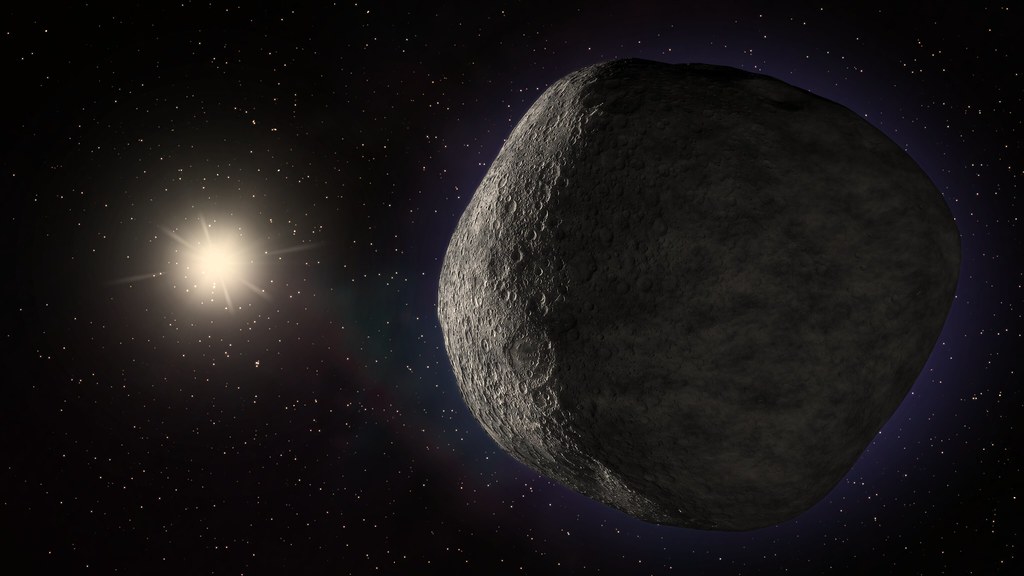Trans-Neptunian Objects (TNOs) are some of the most enigmatic and fascinating objects in our solar system. These icy bodies, which orbit beyond Neptune, are believed to be the remnants of the original building blocks of our solar system. They are also believed to be responsible for the creation of comets that we see today.
In this article, we will take a closer look at TNOs, their discovery, classification, and current research. We will explore the mysteries surrounding these distant objects and what we have learned so far.
Discovery of TNOs
The first TNO to be discovered was Pluto, in 1930, by American astronomer Clyde Tombaugh. Pluto was initially classified as the ninth planet in our solar system. However, in 2006, the International Astronomical Union (IAU) reclassified Pluto as a “dwarf planet” due to its small size and characteristics that distinguish it from the eight planets in our solar system.
Since the discovery of Pluto, many other TNOs have been found. As of 2021, there are more than 3,000 confirmed TNOs, and it is believed that there could be tens of thousands more that have not yet been discovered.
Classification of TNOs
TNOs are classified based on their distance from the Sun, their size, and their orbital characteristics. There are several different types of TNOs, including:
- Classical TNOs: These are TNOs that have relatively circular orbits and are located in a region of space known as the “classical Kuiper Belt.” The Kuiper Belt is a region of space that extends from about 30 to 50 astronomical units (AU) from the Sun.
- Resonant TNOs: These are TNOs that are located in a region of space known as the “resonant Kuiper Belt.” These TNOs have orbits that are in resonance with Neptune’s orbit, which means that they complete a certain number of orbits around the Sun for every one orbit that Neptune completes.
- Scattered Disk Objects: These are TNOs that have highly elliptical orbits that take them far beyond the Kuiper Belt, out to distances of up to 100 AU from the Sun.
- Detached Objects: These are TNOs that have orbits that take them even further out than the scattered disk objects, to distances of up to 1,000 AU from the Sun.
Characteristics of TNOs
TNOs are believed to be remnants from the early solar system, and studying them can provide valuable information about the formation and evolution of our solar system. Some of the key characteristics of TNOs include:
- Composition: TNOs are composed primarily of water, methane, and other volatile compounds. These compounds freeze at the low temperatures found in the outer solar system, which gives TNOs their icy appearance.
- Size: TNOs range in size from small, icy rocks to large objects like Pluto, which is about 2,377 km in diameter.
- Surface Features: TNOs have a wide range of surface features, including craters, mountains, and valleys. Some TNOs also have a reddish tint to their surfaces, which is believed to be caused by the presence of organic molecules.
Current Research on TNOs
There is still much to learn about TNOs, and research in this field is ongoing. Scientists are using a variety of techniques to study these distant objects, including ground-based telescopes, spacecraft missions, and computer simulations.
One of the most exciting developments in TNO research is the New Horizons spacecraft mission. Launched in 2006, New Horizons reached Pluto in 2015, providing the first close-up images and data of this dwarf planet. The spacecraft also flew by the TNO 2014 MU69 (also known as Ultima Thule) in 2019, providing valuable information about this mysterious object.
In addition to spacecraft missions, scientists are also using ground-based telescopes to study TNOs. These telescopes can detect the faint light reflecting off the surfaces of TNOs, providing information about their size, composition, and other characteristics.
Computer simulations are also being used to study TNOs. By creating models of the early solar system and simulating the gravitational interactions between the planets and other objects, scientists can gain insights into how TNOs formed and evolved over time.
Can we see TNO’s from earth?
Trans-Neptunian Objects (TNOs) are generally too dim to be seen with the naked eye from Earth. However, they can be observed using ground-based telescopes equipped with sensitive detectors and advanced imaging techniques.
The most effective way to observe TNOs is through a technique known as “stellar occultation.” This involves measuring the brief dimming of a star’s light as a TNO passes in front of it, providing information about the TNO’s size, shape, and position.
In addition to stellar occultations, TNOs can also be observed through direct imaging with large telescopes. These telescopes use advanced imaging techniques, such as adaptive optics and multi-color imaging, to detect and study TNOs.
The discovery of TNOs has been primarily driven by large-scale surveys using specialised telescopes and detectors. These surveys have helped to identify thousands of TNOs and have provided valuable insights into the distribution and properties of these distant, icy bodies.
Overall, while TNOs cannot be seen with the naked eye, they can be observed and studied using advanced telescopes and imaging techniques, which have helped to expand our understanding of these fascinating objects.
Conclusion
Trans-Neptunian Objects (TNOs) are some of the most mysterious and fascinating objects in our solar system. These distant, icy bodies orbit beyond Neptune and are believed to be remnants from the early solar system. Studying TNOs can provide valuable information about the formation and evolution of our solar system.
Since the discovery of Pluto in 1930, many other TNOs have been found, and there are still tens of thousands more that have not yet been discovered. TNOs are classified based on their distance from the Sun, their size, and their orbital characteristics.
Research into TNOs is ongoing, and scientists are using a variety of techniques to study these objects. The New Horizons spacecraft mission has provided valuable data about Pluto and other TNOs, while ground-based telescopes and computer simulations are also being used to gain insights into these mysterious objects.
Despite the many discoveries and advancements in our understanding of TNOs, there is still much to learn about these distant, icy bodies. As research in this field continues, we can expect to uncover even more secrets about the origins and evolution of our solar system.

